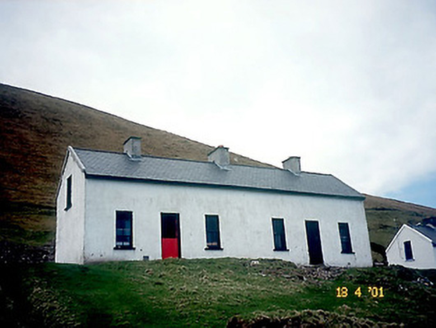
So hooked was I on them that I could tell you on which side of a page within one of those annuals was a story about two skinny young British brothers, one a naturalist, the other an actor: David and Peter Attenborough. My older sister used to col lect the big solid hardback annuals associated with the Girl comic, their bright red covers featuring a drawing of a girl with flowing hair. Obsessive book-hoarders like me have moments where we curse ourselves for the loss of specific volumes, most of them of no intrinsic value. On the other hand, those who abandon their schoolbooks don’t seem to regret it, later. People interested in history tend to keep their school history books and similarly former students with a love for poetry preserve the collections of verse they had in fifth or sixth year, but lots of people just fail to throw out their schoolbooks and never look at them again. Interesting, too, that few of those who retain their schoolbooks can point to even one good reason for so doing. It is interesting, though, that so many people hang on to their schoolbooks long after those schoolbooks have any relevance.

Even the odd bit of cyber bullying would be easier to bear than the cold wet stones of her prose. Not having to suffer Peig - on its own - must radically improve the experience of second level education.

Signs on it, they don’t have to study Peig’s account of unremitting misery and write essays in Irish peppered with Seanfhocail letting on to find wit and wisdom in a book signally lacking either. These days, kids actively look forward to going back to school. People who today are hooked on Kindle and would not dream of buying a physical book, nonetheless have a dog-eared copy of Peig on their shelves, perhaps to remind them of how awful school was, back in the day. Yet it has now emerged that the book of her life is one of those lovingly preserved down all the decades by Irish people. But Liveline would have had her on only once, because even the misery-addicted cconstant listenership to that programme would have responded to her autobiography by texting Joe to say she should get over herself and get a life. He’d have located her, got her on line 3 and encouraged her through every death and disaster with his characteristic little moans of detached sympathy. Had she lived to the present day, Joe Duffy would have loved Peig. From start to finish, it was the saga of a woman put upon by fate, tortured by destiny, plagued by catastrophe, unappreciated by God and tired out with the miseries visited upon her.

If you think about it, why would the three apostles highest in the Kingdom of Grace be hanging around a cabin in furthest Kerry where St Brigid was already doing bi-location, when the person praying to them didn’t even bother to know their names? It is recorded that, as a storyteller, “Peig would at once switch from gravity to gaiety, for she was a light-hearted woman, and her changes of mood and face were like the changes of running water.” This may be true, but it sure as hell was not true in the book about her life to which countless secondary school students were subjected in their search for a Leaving Cert. Just don’t, all right? It’s up there with crystals in terms of blind faith, but errs on the side of grandiosity. (Which won’t stop those in 2080 doing it, when they’re told that, in defiance of all the scientific wisdom in the world at our disposal, through Google, a substantial minority of the 2014 population managed to put their faith in crystals as a way of healing whatever ailed them.) But don’t tell me that Peig’s prayer is high culture. Of course it ill behoves any of us to jeer at the reverence of our ancestors. “The three angels and the three apostles who are highest in the Kingdom of Grace, guiding this house and its contents until day.”Īh, here. Brigid at the two ends of the house, and Mary in the centre,” Peig woukd intone. “I preserve the fire as Christ preserves all.

Of course, those who preserve the legend of Peig, who lived on the Blasket Islands for some of her life before dying on the mainland in 1958, lovingly report how, at the end of a night’s story-telling, Peig would draw the ashes over the turf in the hearth to keep the life in the fire until morning, while reciting a prayer.


 0 kommentar(er)
0 kommentar(er)
